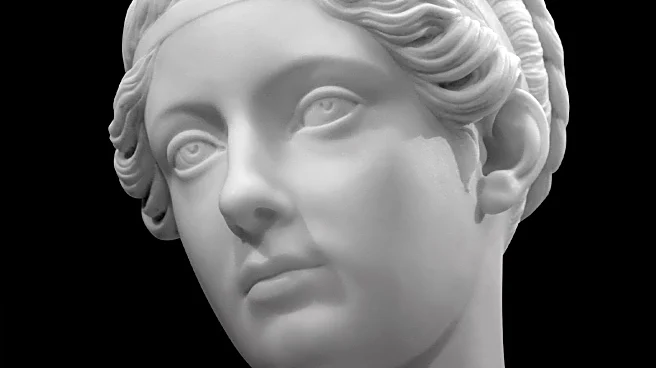What's Happening?
Researchers at Poland's Adam Mickiewicz University have identified a Roman statue discovered 20 years ago as Laodice, a Roman matron from Chersonesos. The statue was found in 2003 during an excavation of a large residential house in Chersonesos, near the theater and agora. The identification was made possible by matching the statue's pedestal, inscribed with Laodice's name, found in the Archaeological Museum in Odessa, Ukraine. The pedestal dates back to the second quarter of the 2nd century, aligning with the statue's style and the marble's origin from the Greek island of Paros. Laodice was honored with a statue for her role in securing eleutheria, or liberty, for Chersonesos, allowing the city to manage its own affairs.
Why It's Important?
The identification of Laodice's statue highlights the significant role Roman women played in political life, both in Rome and its provinces. This discovery sheds light on the historical context of Chersonesos, a city that valued autonomy and self-governance. The statue's identification also underscores the importance of archaeological research in uncovering the contributions of women in ancient societies, often overlooked in historical records. The recognition of Laodice's influence in securing freedom for Chersonesos provides insight into the political dynamics of the Roman Empire's hinterlands.
What's Next?
Further research may explore the broader implications of Laodice's role in Chersonesos and the political strategies employed by Roman women in similar contexts. The discovery could lead to more investigations into the social and political structures of Roman colonies and the influence of local elites. Additionally, the identification may prompt renewed interest in the archaeological sites of Chersonesos and the preservation of its historical artifacts.
Beyond the Headlines
The identification of Laodice's statue raises questions about the representation of women in historical narratives and the preservation of cultural heritage. It highlights the need for continued efforts in archaeological research to uncover the stories of influential women in history. The discovery also emphasizes the importance of international collaboration in preserving and studying ancient artifacts, as seen in the cooperation between Polish researchers and Ukrainian archives.












